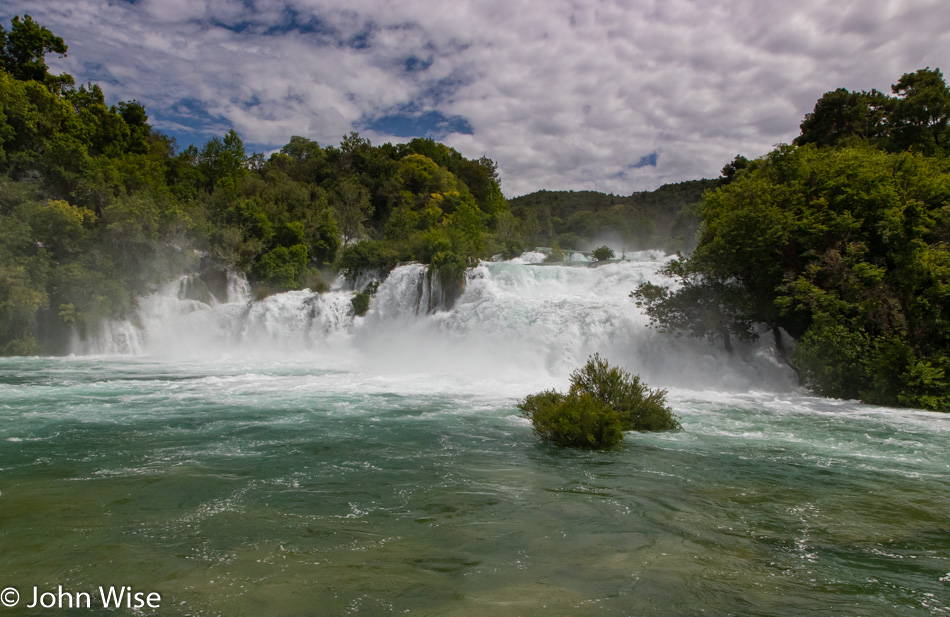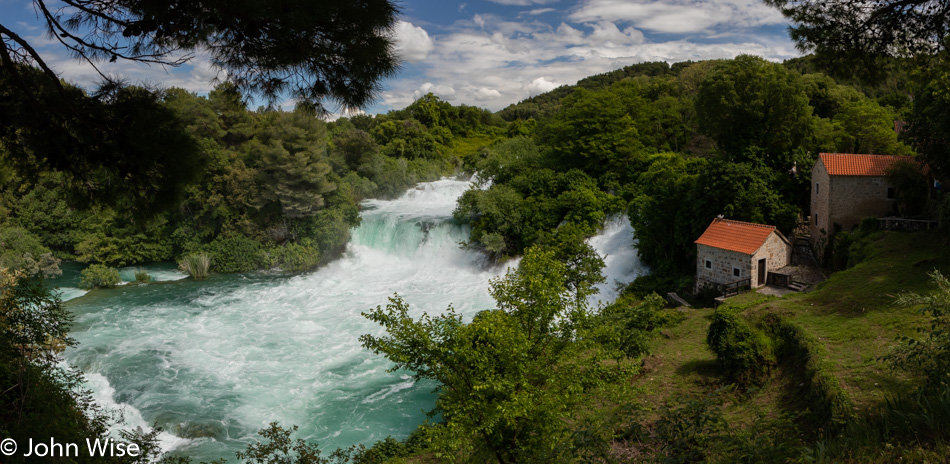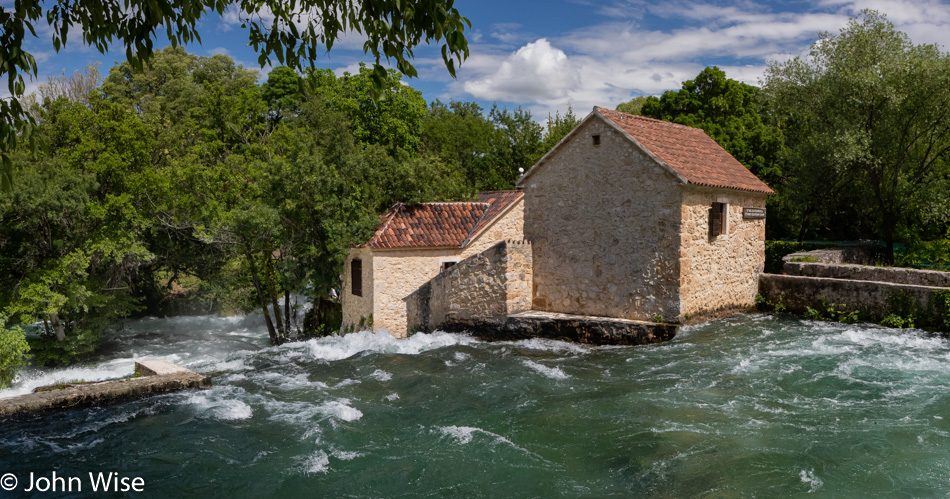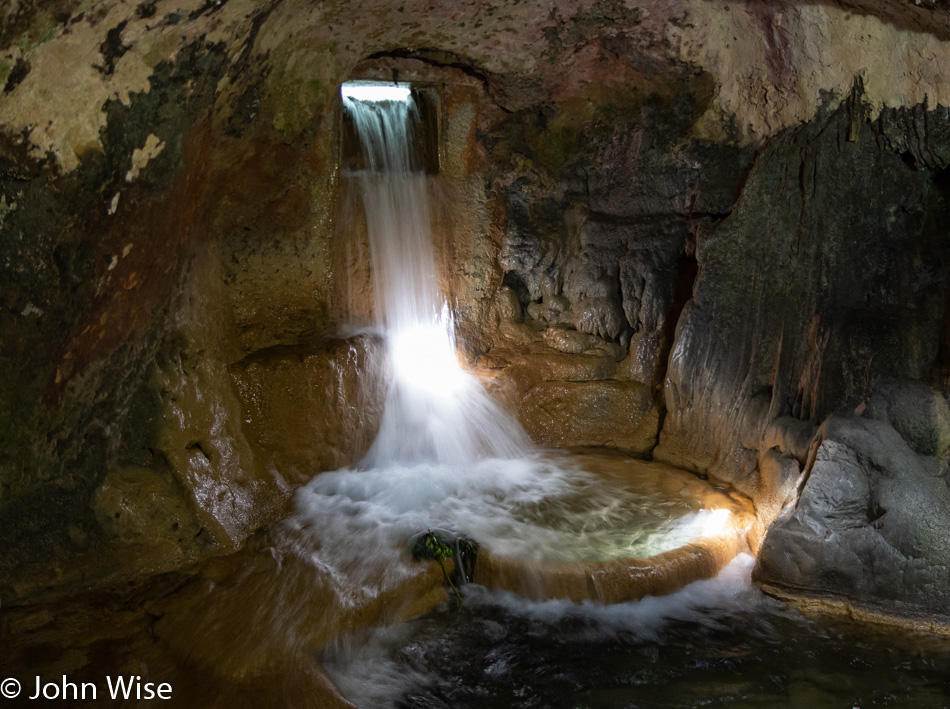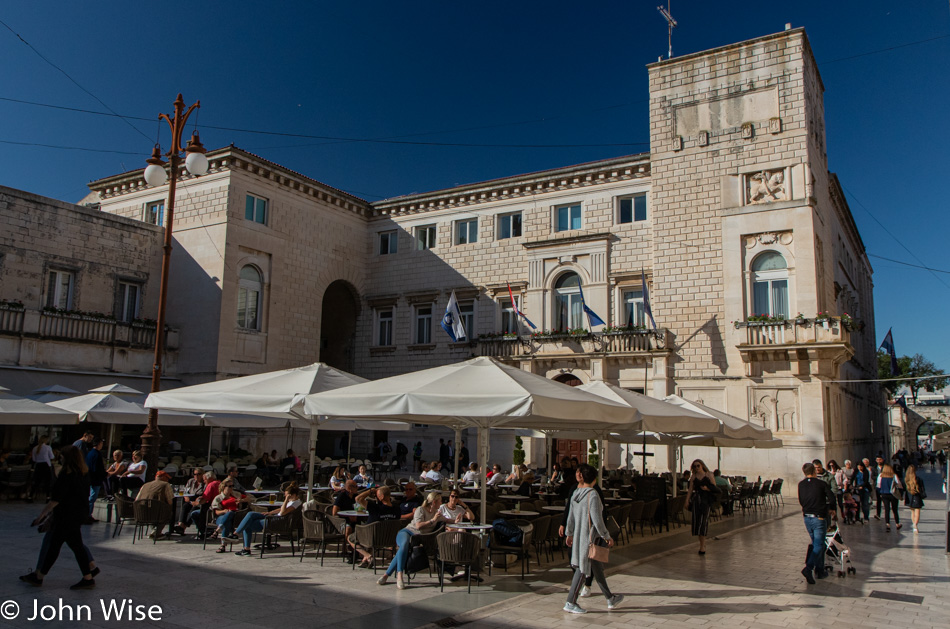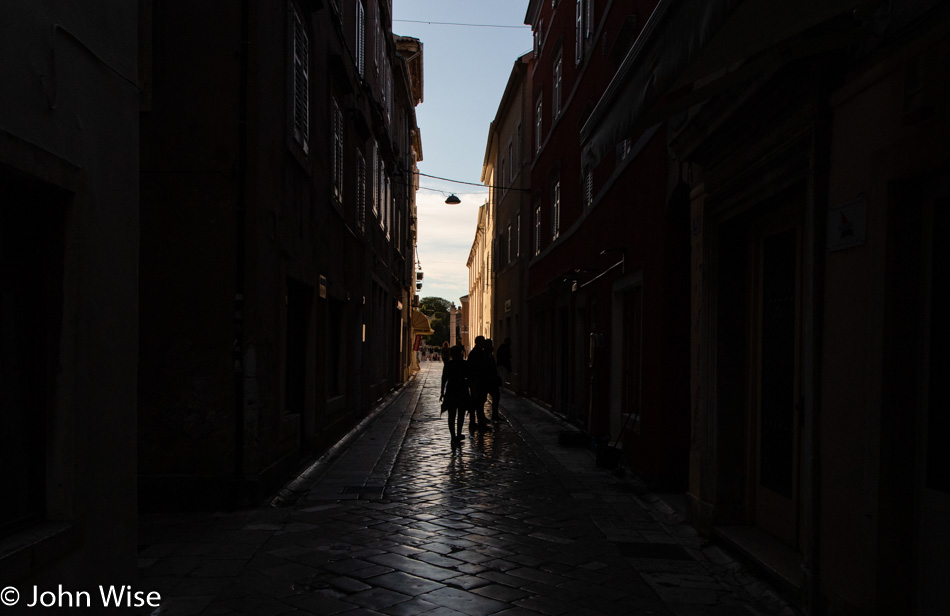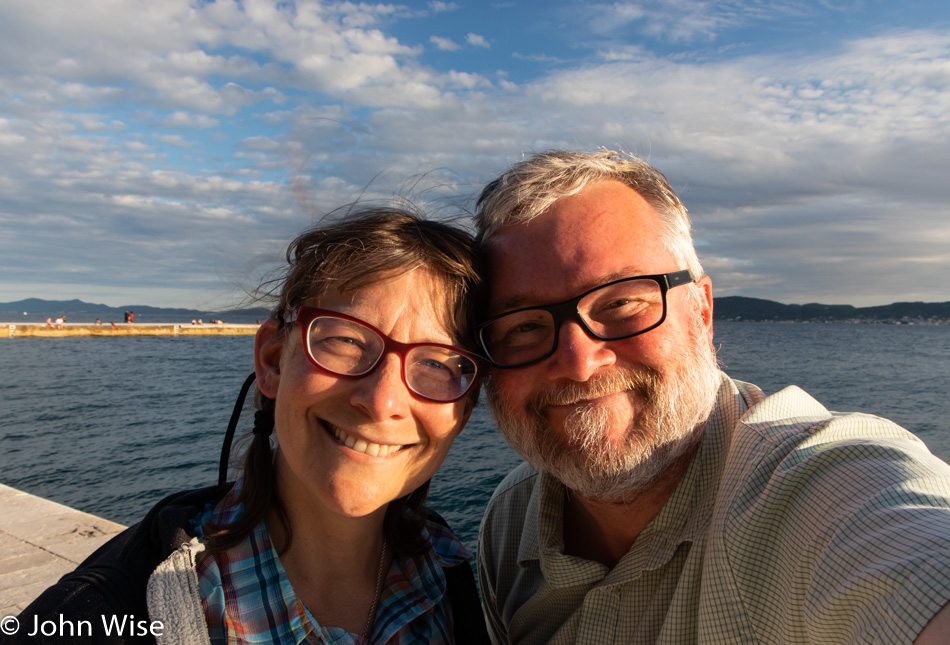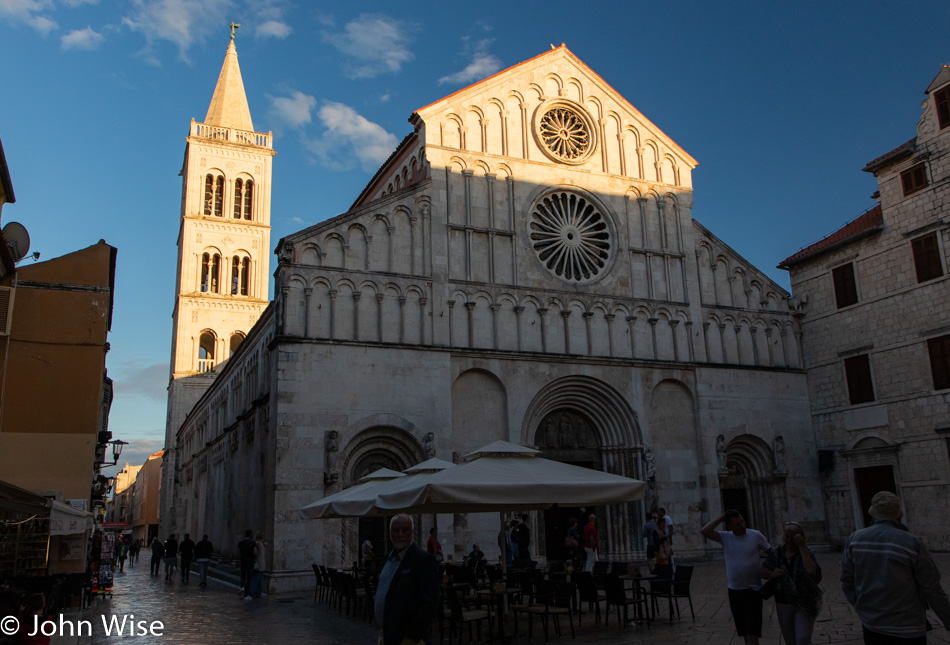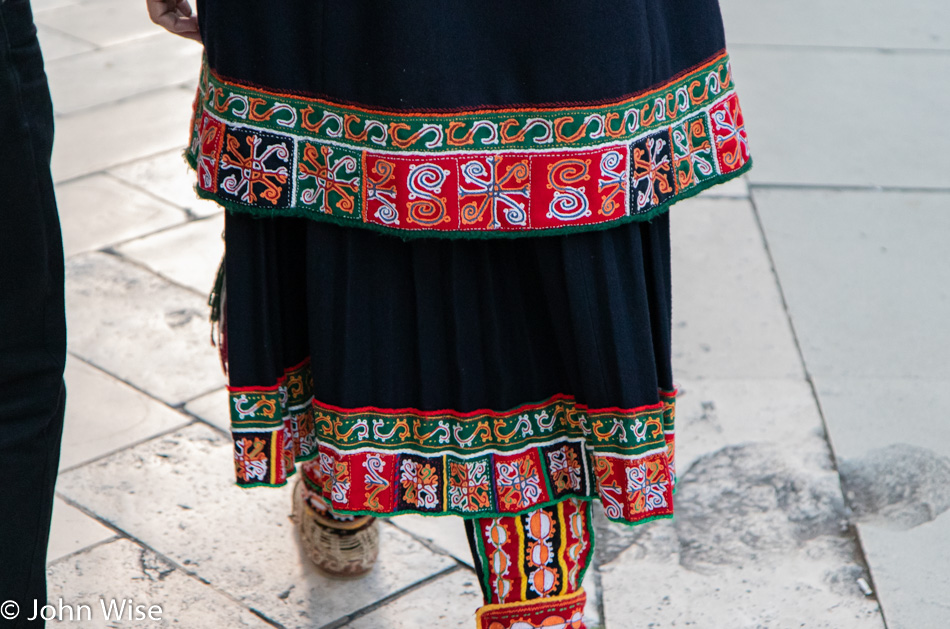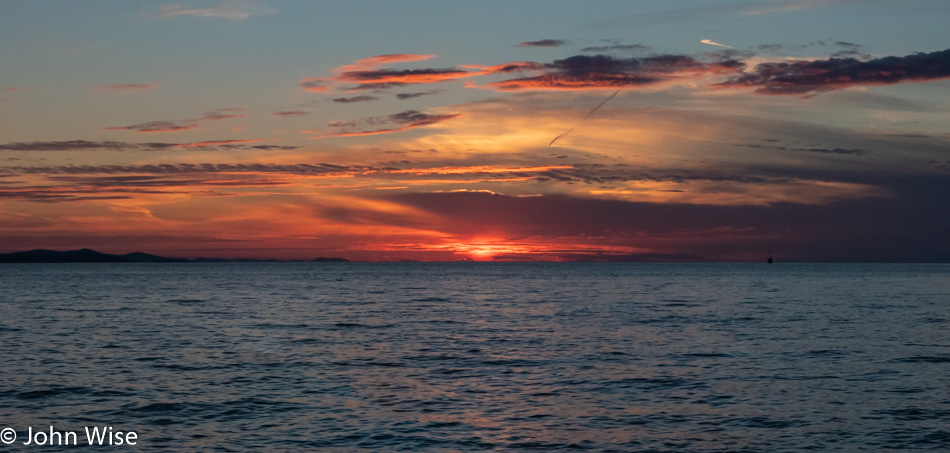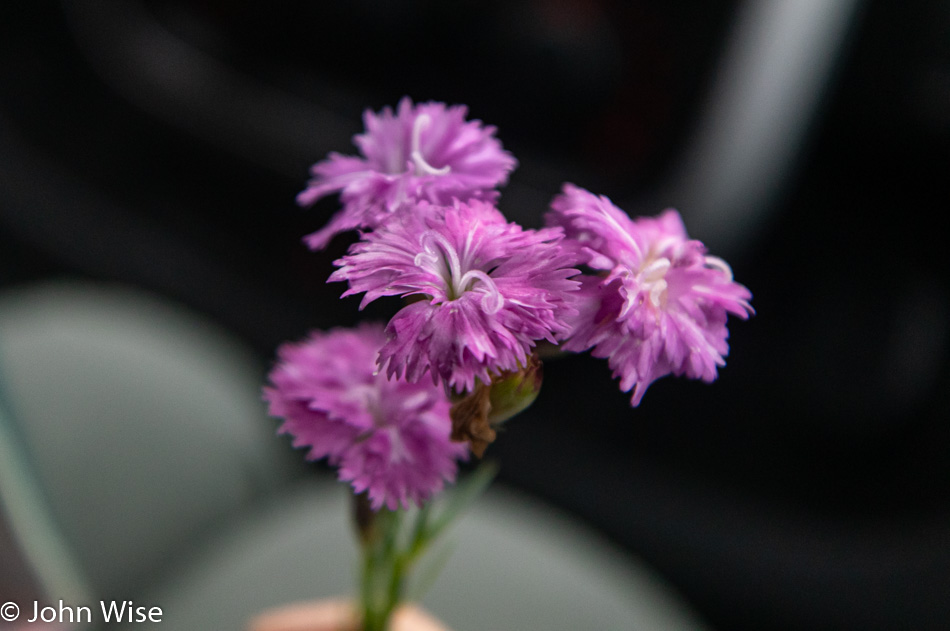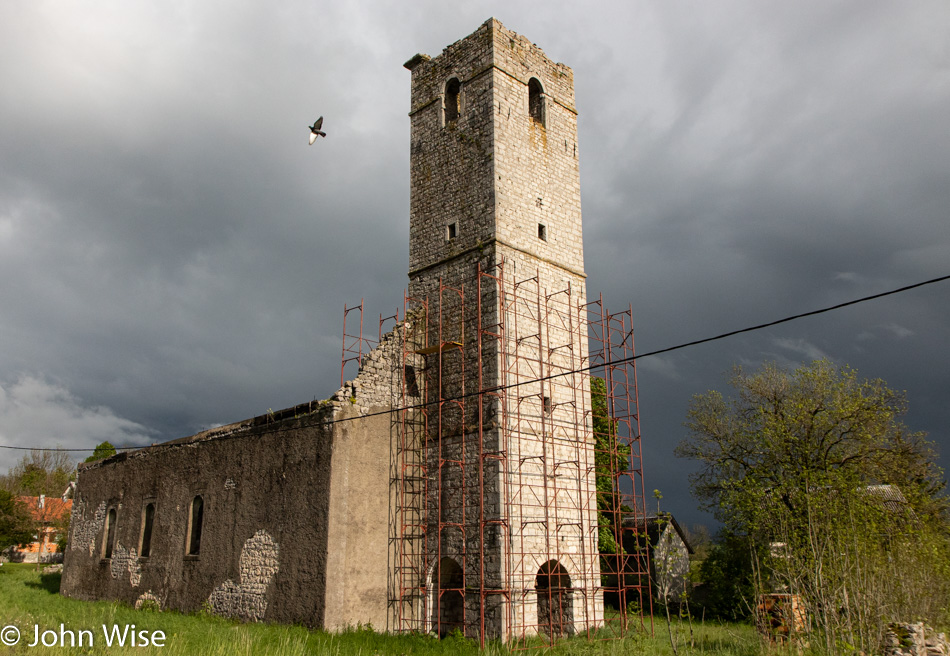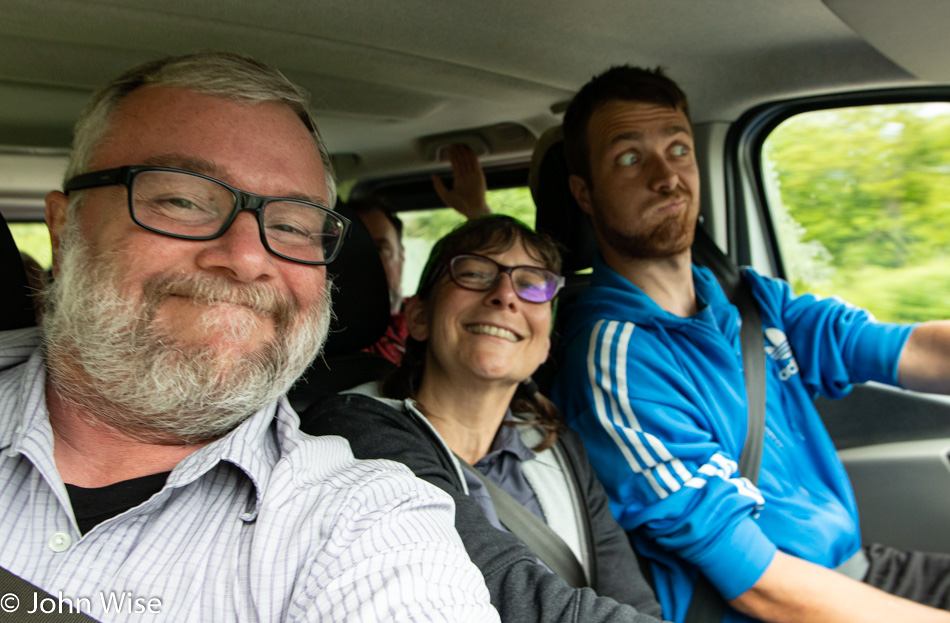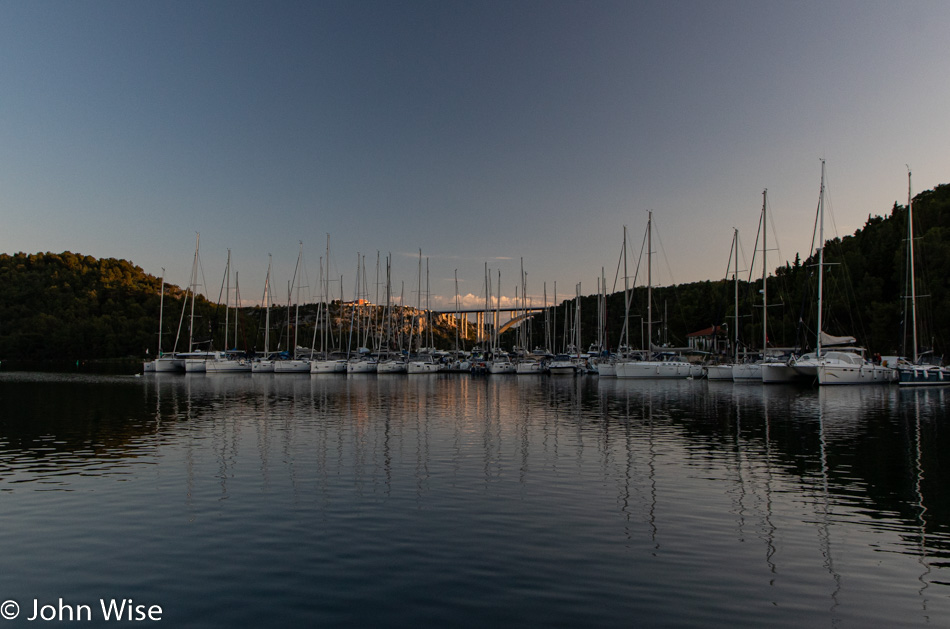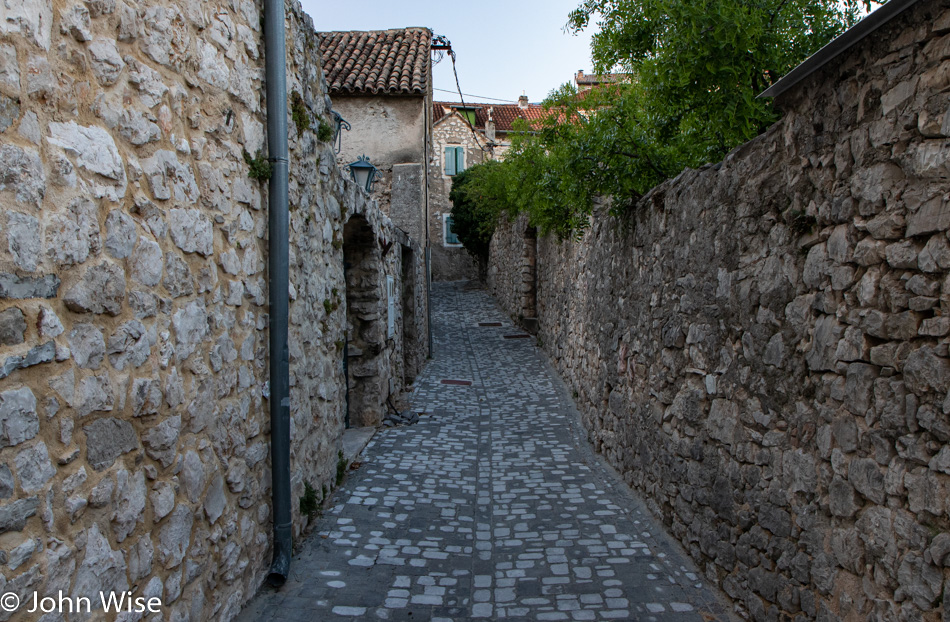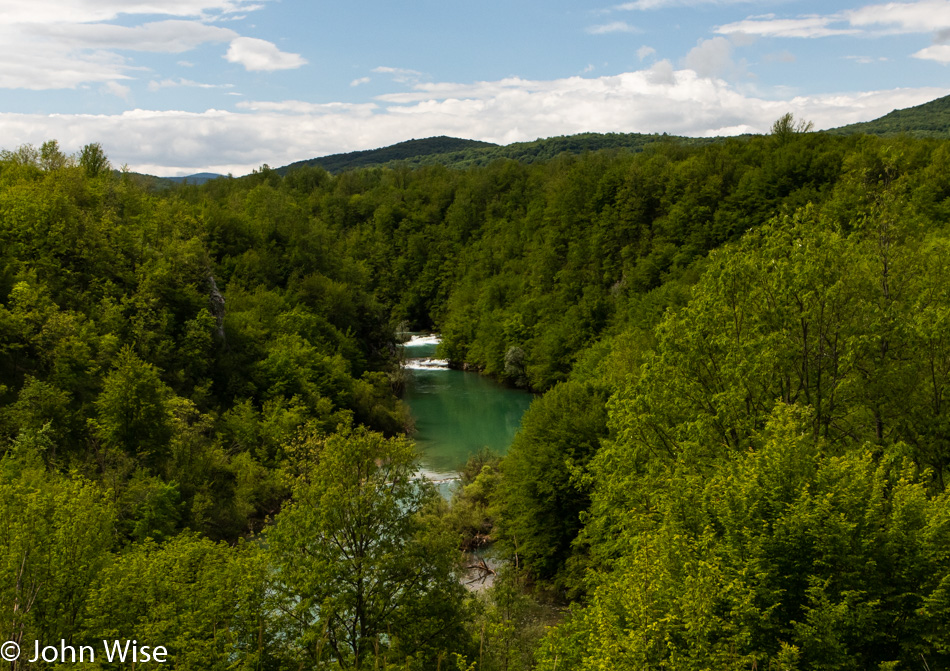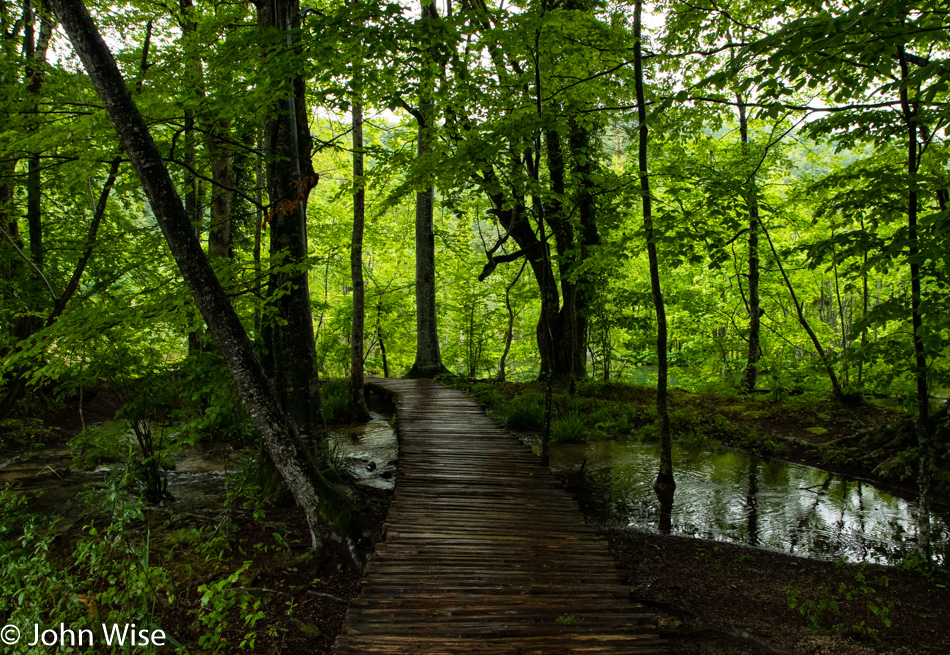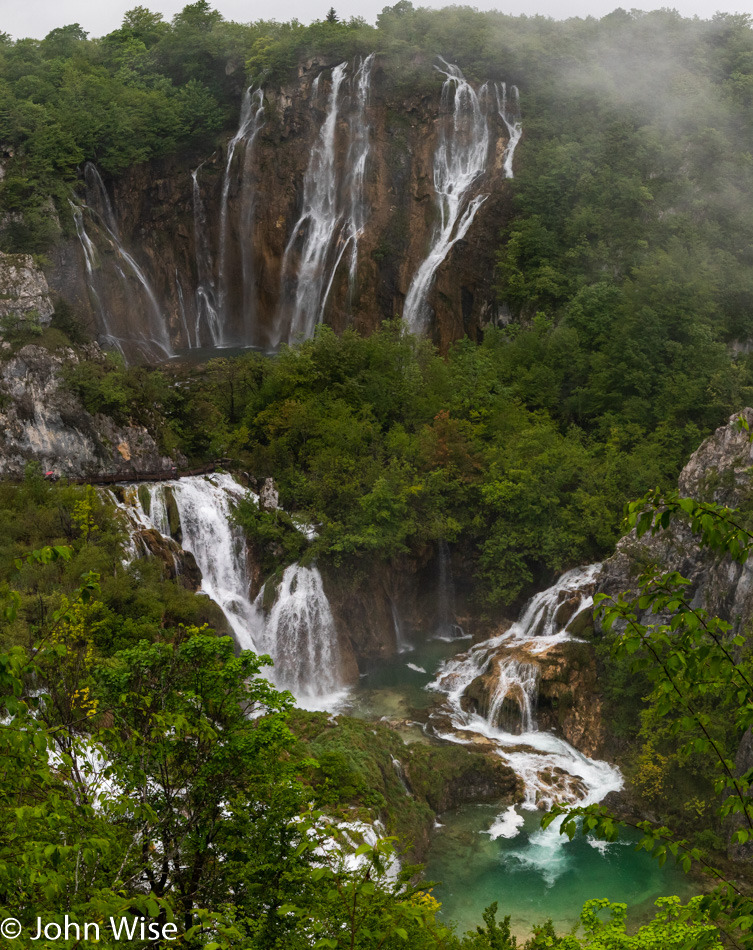
Skradin is in the rearview mirror by 8:30 as we are on our way to a point on the map near Omiš, Croatia.
Along the way, the conversation returns to politics, culture, and the economy. At the beginning of the trip, I felt I was creating some friction and uncomfortable moments for some passengers as I was knee-deep in the European elections and taking a hard look at the differences between America and Europe. Here we are approaching a week of time spent together, and the group is now asking questions about all things Balkan, including war, health care, taxes, and jobs. They are being schooled about things that most Americans avoid in conversation. We’ve even dipped into religion and ethnic tensions, where they’ve learned that a lot of the purported friction is actually fiction that the common person doesn’t live with. If there was one takeaway from talking with locals, it would be that media contrivances appear to be propaganda supporting strongmen who give legitimacy to powers that want to exploit resources that allow these puppets to get rich, take a fall with a short prison stint before emerging to a life of luxury.

It’s barely after 10:00, and we are now on the Cetina River in the capable hands of CroActive Rafting. Our trip leader on this leg of our adventure is Ivan Šafradin, who also plays a key role in helping save regional wild rivers from damming.

This new Ivan (who shouldn’t be confused with “our” Ivan, who just started working for Raftrek) is currently in his last season as a river guide as he’s about to leave this life behind to start a family. I hardly know the guy, but his passion for taking direct action to save rivers and his great storytelling ability means that the rafting world is about to lose a real asset.

The sun is obviously shining down upon us today, and while river levels are a bit higher, they don’t inhibit our ability to glide peacefully down this crystal-clear river. There are three rafts out here paddling along on the Cetina, one of them with a family out for a day on the river, and the other two are us Americans.
Ivan regales us with funny stories about fistfights on board, wealthy Russians who won’t tell you their names or participate, and one particularly great anecdote about an important politician who asked about Ivan’s opinion about politics. Ivan, not understanding the very high level of the person asking the question, gave his honest but harsh thoughts about the type of people and crap they do, which resulted in this passenger not uttering one more word to Ivan for the duration of the river trip. Much later, Ivan learned who this passenger was, and while angry at his boss for not informing him beforehand of the man’s status, he refused to apologize and soften the blow of his opinion. Said politician later ended up in jail on corruption charges.
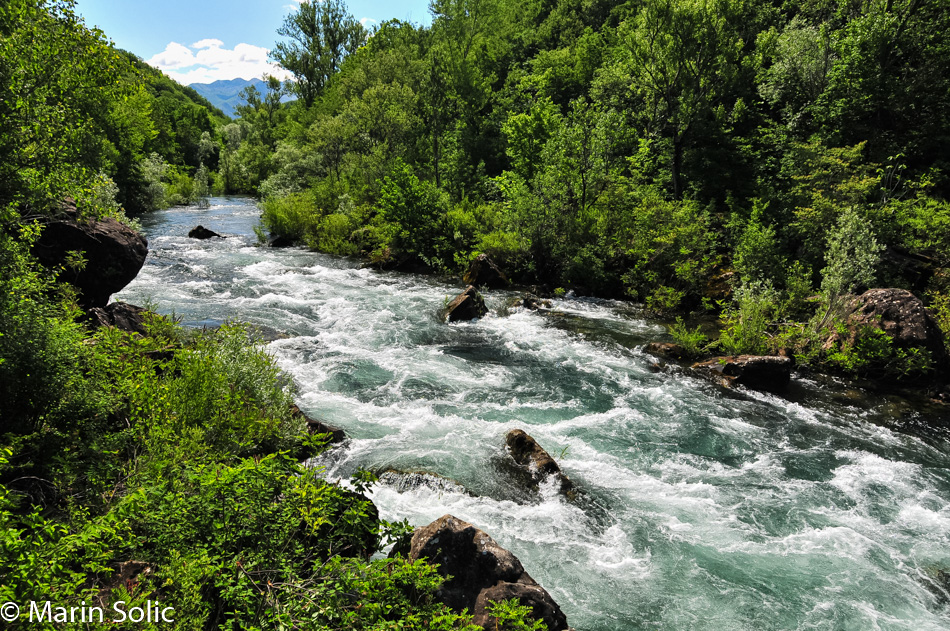
The photos I cannot take are the filler of the action segments where the concentration of staying in the raft is in full force. You can easily believe that I wish every river trip employed someone to set up along the path for taking just these types of photos.
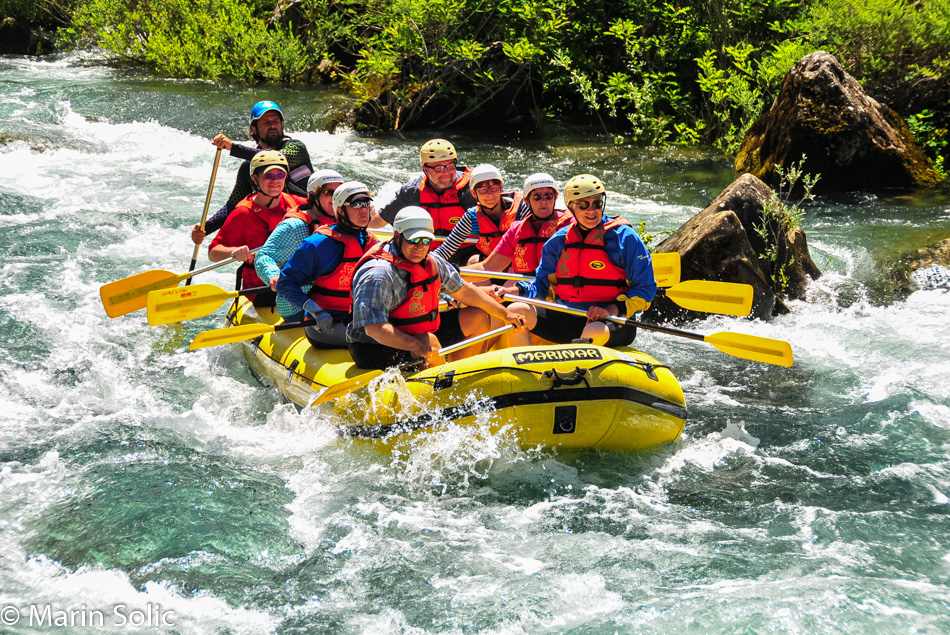
Well, not just those photos of the spectacular white water but also of us passing through them.

There’s one particularly tricky part of the river that has resulted in injuries and, if I heard correctly, at least one death. So we passengers, at this point, leave our rafts for a short hike up and over a trail that takes us just past the constriction, where we’ll reboard and continue downriver.

Not only do I have a soft spot for thistle it turns out that Caroline was enchanted by the metallic shine of these beetles and requested that I grab a shot of them for her.

From our vantage point, we can only see one small section of the river constriction where individual boatmen brave the treacherous waters to guide our rafts down to us. While I appreciate their abundance of caution I’m still curious just what this length of the river looks like.
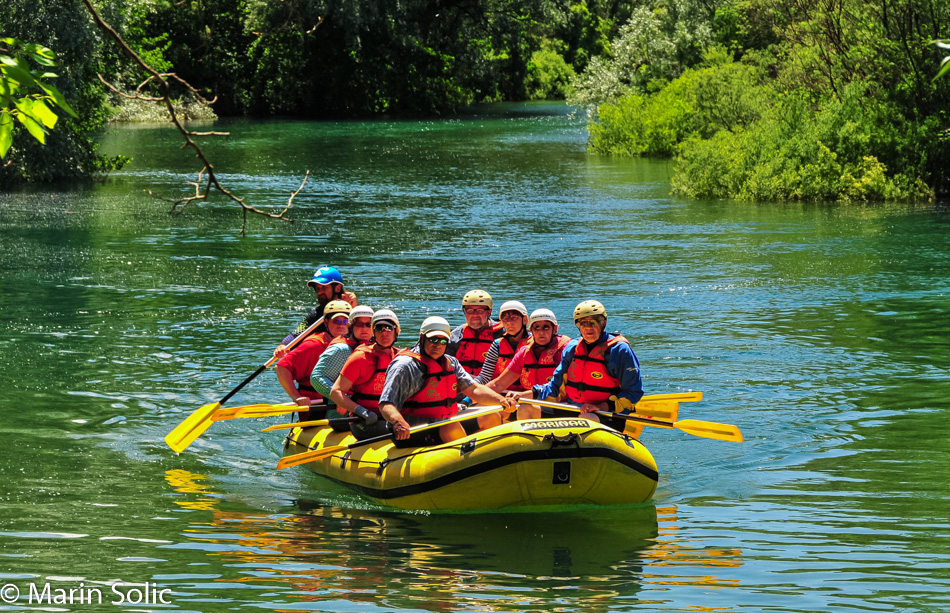
Does that helmet make my head look fat?
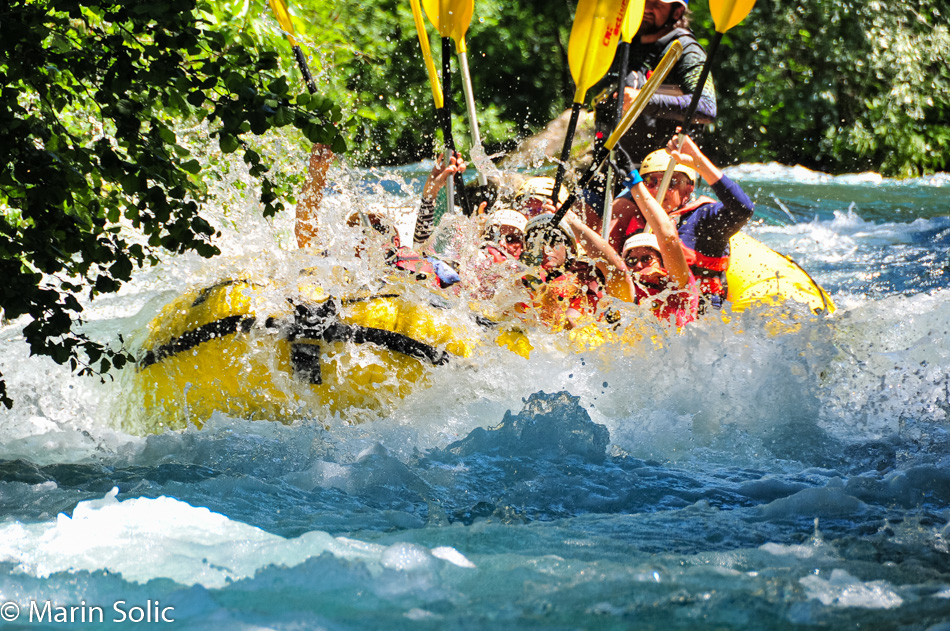
We’ve not done this maneuver before, where we all fall into the center of the raft to lower the center of gravity and hope that nobody gets bumped out of the boat should we be going over boulders that are close to the surface.

You might be able to make out a sliver of red on the right of the center; it is the man in the kayak who filmed segments of our river trip and then offered them for sale to us at our takeout.

While my DSLR wouldn’t brave the rapids and survive to take photos of the rest of our trip to the Balkans, I was able to drag it out on the calm parts of the river.
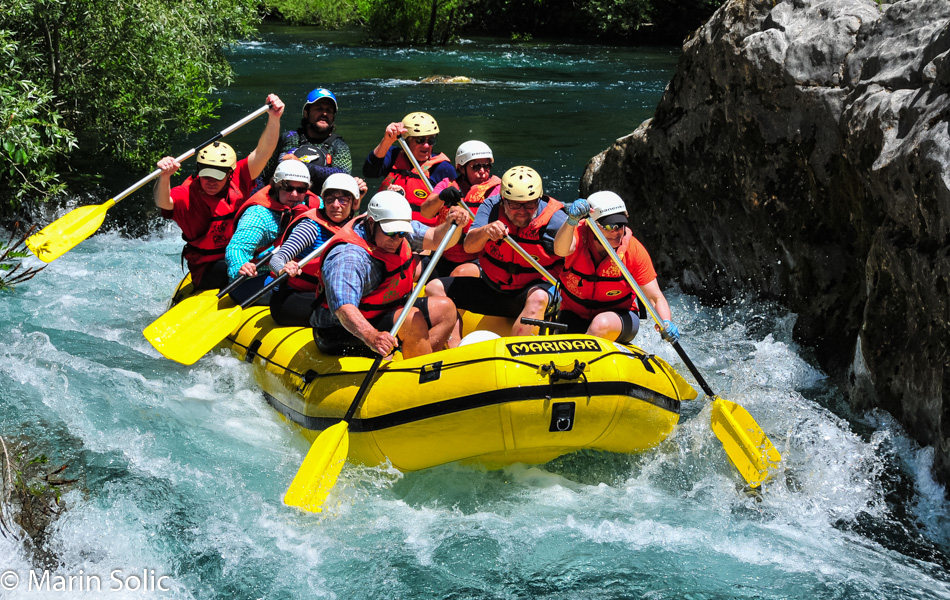
Even if I had my camera in my hands, I’d never be able to capture an image this important to Caroline and me as it includes her and me, proving that we were in the raft while paddling through the white water parts and not simply walking around the tougher parts.
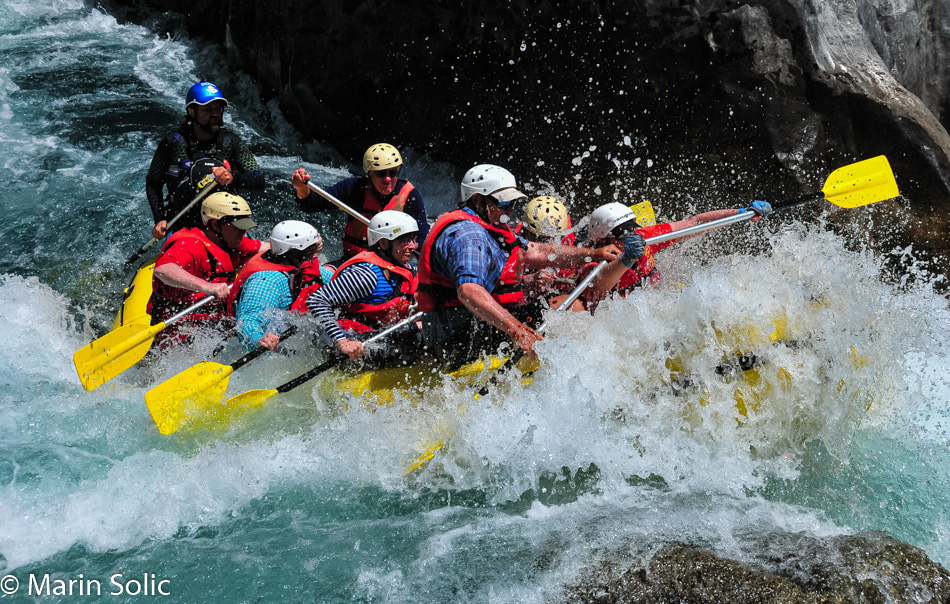
If I told you I wasn’t mostly terrified when going over this kind of stuff, I’d be lying. While I may do this with some reluctance and a judicious amount of fear, I’m aware of how lucky I am that I’m willing to get out here, again and again, day after day. Then I also have to consider how profoundly lucky Caroline and I both are that we are relatively enthusiastic about the two of us risking things in order to be out here gaining these experiences.

The funny thing about reviewing my photos is that without the other images from our kayaking friend, you’d be left thinking we were on a tranquil float on some calm waters that gently flowed through the bucolic countryside. Think again and be sure to notice the helmets that are on for the safety of our heads should one encounter a rock.
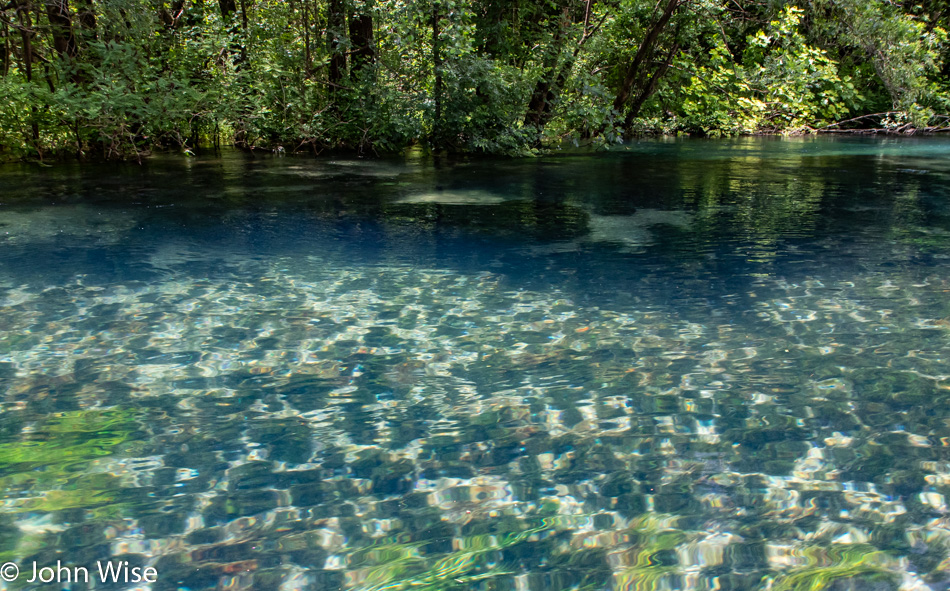
I took dozens of photos trying to grab the right angle and lighting to best demonstrate the clarity of the waters of the Cetina River, and although I’m sharing this one, I still don’t feel it does justice to what they really looked like. They are thousands of times more beautiful than what this shows.

Off the river and back in dry clothes, we were soon back next to the Cetina as we pulled up to a long table at Radmanove Mlinice or, for English speakers, Radman’s Mills. The location of this riverside, tree-covered restaurant is perfect, and the fact that they cook some of their food under the bell just adds to the character. Caroline opted for some truly great trout while I went for the grilled pork and potatoes. This is definitely on the list of places to visit again should we be passing down the Dalmatian Coast in the future.

Welcome to Split, Croatia. It’s approaching 4:00 p.m. upon our arrival, and we waste no time on starting on our walking tour of the old town.
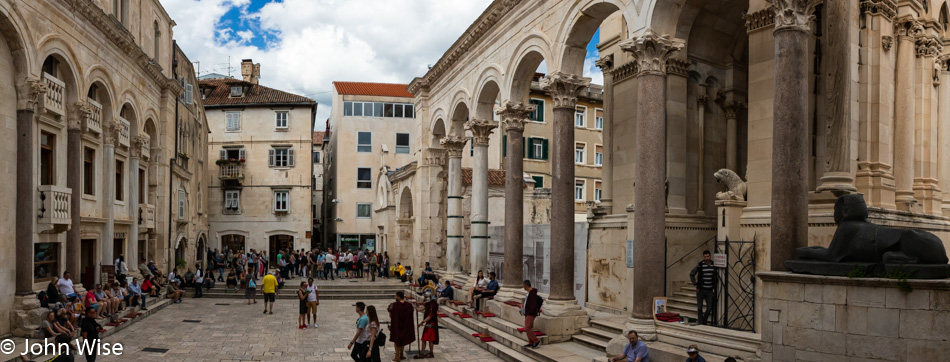
Okay, is this real or the set of a movie? It’s supposedly part of the Palace of Emperor Diocletian, built over 1,200 years before white people discovered Native Americans living in a “deserted” country that needed “populating.”

More foot-polished walkways shining like jewels in the late day sun.

You cannot jam a 2,000-year-old city into your senses in two hours. You barely have time to inventory a fraction of the architecture. You cannot visit a museum or dawdle along in contemplation while finding clues about the various occupations and history that have occurred on these streets.

The best we can do is make wide slices through the city and hope to get some impressions that will click in the column of “visit again in the future” or “pass this one up for other places that rank higher in the importance of the aesthetics we’ve put on a pedestal.” Sadly, we cannot venture outside of the central core, and here, in the middle of it all, we are surrounded by attractions meant to occupy tourists with short attention spans. We are also starting to recognize that the areas surrounding these historical districts are often post-World War II Soviet utilitarian structures where tourism was never going to be part of the equation. The problem is that those areas are often simply ugly and create a buffering zone that is not only not attractive but often feels depressingly sterile.
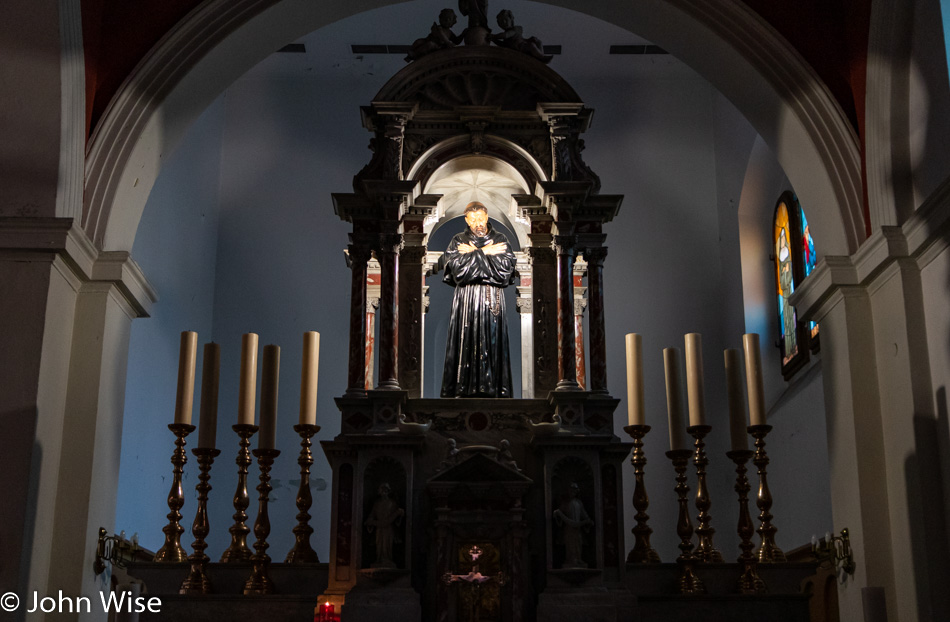
There always seems to be time to peek into a church, but we have to be quick about it.

While grass and shrubbery growing on the face of an ancient wall is intriguing, I’d venture a bet that the roots reaching into the crevices of a thousand-year-old wall are damaging to the structure. Such is the price of beauty.

Great use of multi-colored paper tape to leave “graffiti” on the wall that remains easy enough to remove.

Just as the folk singers completed our experience in Zadar yesterday, a stop at Ethnic – Croatian Ethnic Design store where Caroline picked up this bag on her back along with a smaller one for her friend Christine let her feel like her visit to Split couldn’t get any better. As it turns out, we got to learn a little about the owner of the shop. Her name is Sanja Schwinn, and she has a great sense of responsibility. Her shopkeeper forgot to give our bank card back to us but ran after us just seconds after we left the shop. Looking into the crowd, she couldn’t find us and so instead called the police and reported that she had our card. We didn’t realize we’d left it for days and then, just before we were to leave the Balkans, I couldn’t find the card and Caroline had a vague memory that the last time we used it was in Split at the shop she bought her new favorite bag ever.
We found Sanja on Facebook and reached out. She told us how she contacted the police, the tourism office, and finally, our bank in America, who told her to go ahead and destroy our card. She was so obviously apologetic about any inconvenience this might have caused us, though we assured her it was no problem at all. Now, her shop holds an even more special place in our hearts. Next time we’re in Split, it will be her shop we visit first, but even before we get back there, I’d bet Caroline will be reaching out to try and buy some other Croatian ethnic designs that she’d like to have. Sanja’s shop is located at vrh Lucac 13 in Split, Croatia and she can be found on Facebook by clicking right here.
Down another small street, we stumbled upon a shop that was selling yarns, fabric, and various other crafty items that allowed Caroline to purchase some ribbons that would complement a project or two after we returned home.
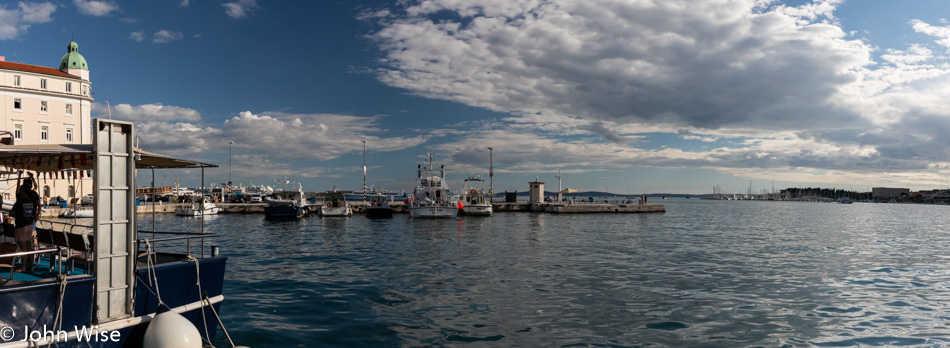
One last quick look at the marina, and it was time to split from Split. Okay, there’s just enough time to grab a coffee at Cafe Bar Romana and bask in the shadow of the Adriatic here on the Promenade.

A rare group photo minus yours truly, and off we go to the vans to drive to Bosnia and Herzegovina.

The Diocletian Aqueduct here in Split was built approximately 1,700 years ago to supply water to the Palace of Emperor Diocletian. Think about this for a minute: the Romans built this near the end of the 3rd century AD to supply fresh water to a palace in Split from over 6 miles away, and today, we cannot supply fresh, clean water to the people of Flint, Michigan. If you ask me, it’s because that community is poor and mostly African-American, but that’s just my opinion.
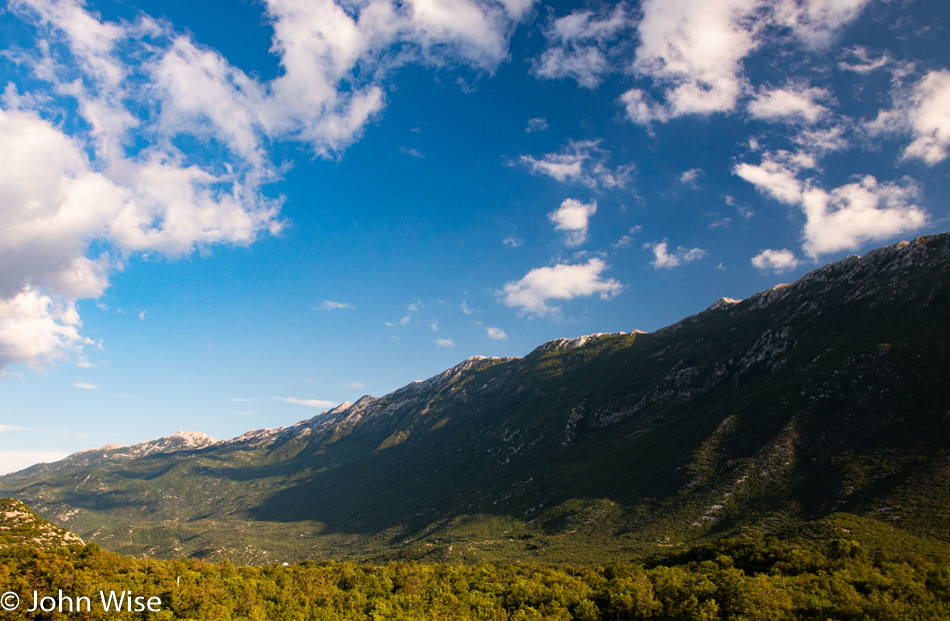
The road to Bosnia is not paved in gold, but it is beautiful as has been all of the various landscapes we are encountering here in the Balkans.
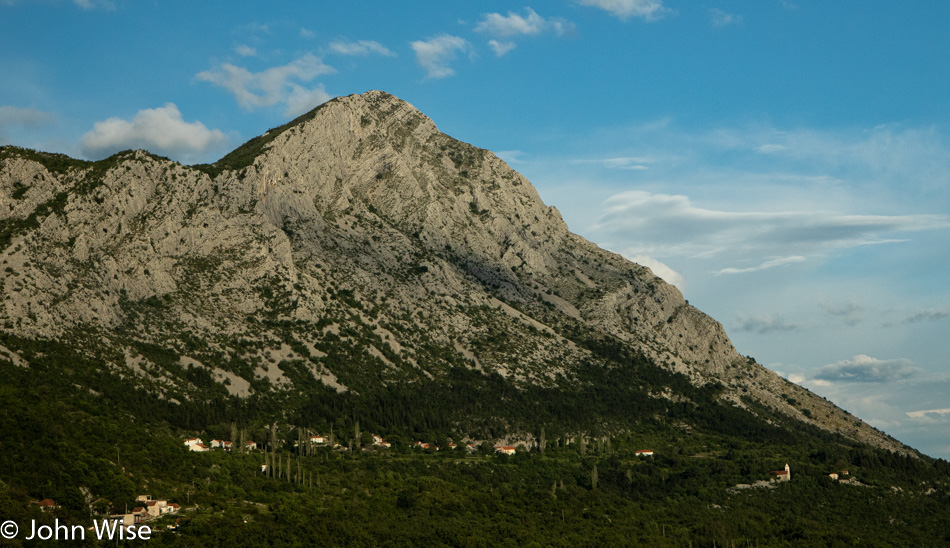
Many of my landscape photos are being taken from the highway as we drive along as scheduling demands we get places. So if you see some motion blur or trees in the foreground smeared by the moving camera, well, now you know what’s up with that.

We are barely over the border in Bosnia and Herzegovina, where we’ll be staying the night in the town of Ljubuški. After settling into our room here at the Motel Restoran Most, Caroline and I took a walk along the Trebižat River, where we’ll be kayaking tomorrow. Unfortunately, we won’t be visiting Medjugorje just down the road to witness firsthand the apparitions of the Virgin Mary that have been experienced since 1981.

The cavity that contains my brain is being searched for the echoes of thoughts and impressions that must be lost up there somewhere. After dinner, I sat with an emptiness where words to help describe the day were not to be found, but instead, I think I heard a voice telling me to go to sleep. I resist and am compelled to squeeze something, anything from the right hand that is trying to follow the instructions of a mind that is drawing a blank. I strain my eyes to look for the black squiggles on a blank sheet of paper that might tell me of insights that were had over the course of the busy day. Those markings should be the clues that will be read by future John and Caroline that might reveal themselves to be pathways to memories that were had this day but are elusive to me at this moment. Instead, I will have to rely on the photos to trigger a return to the many impressions taken. In the time it took to write this, no other inspiration rose to the surface, so instead, we will head upstairs and give in to the demand that we put ourselves to sleep.









